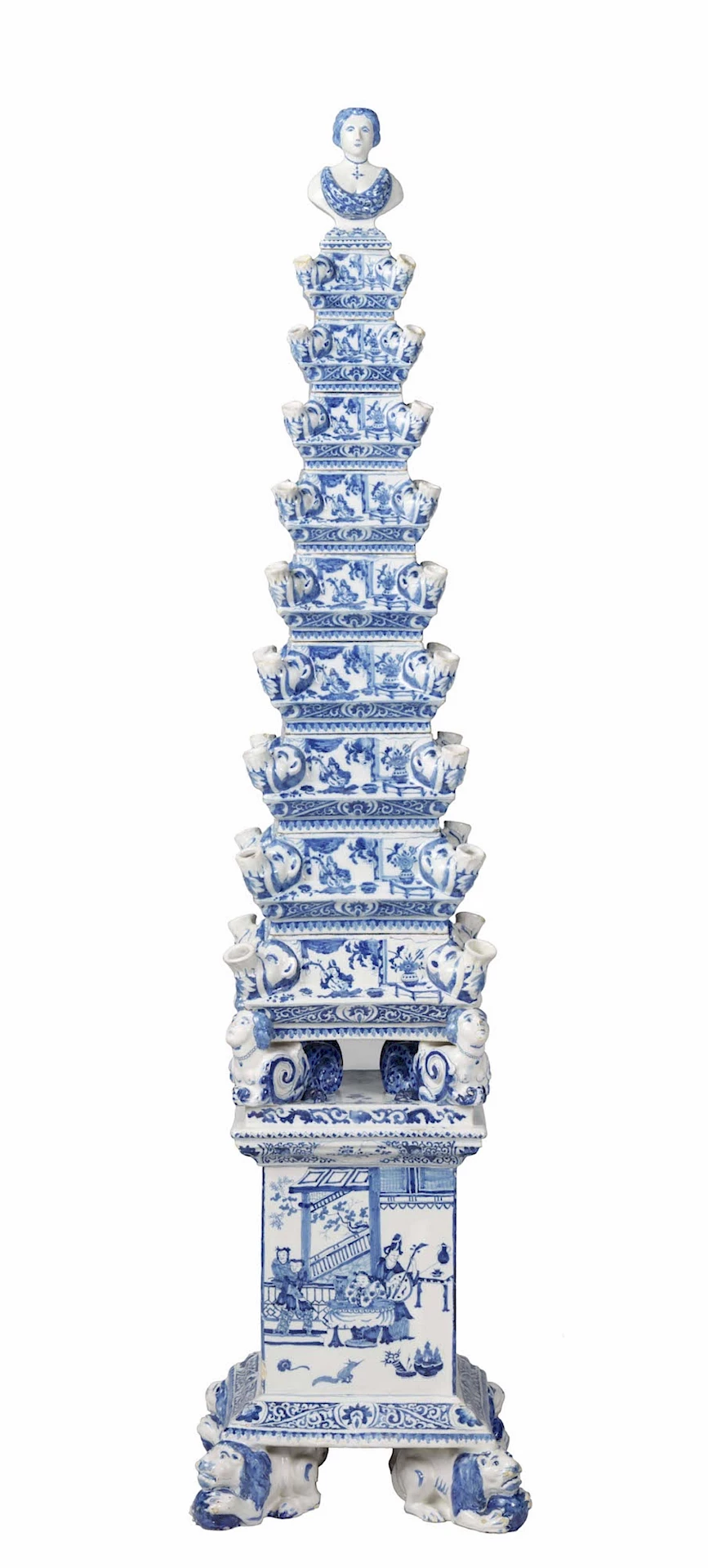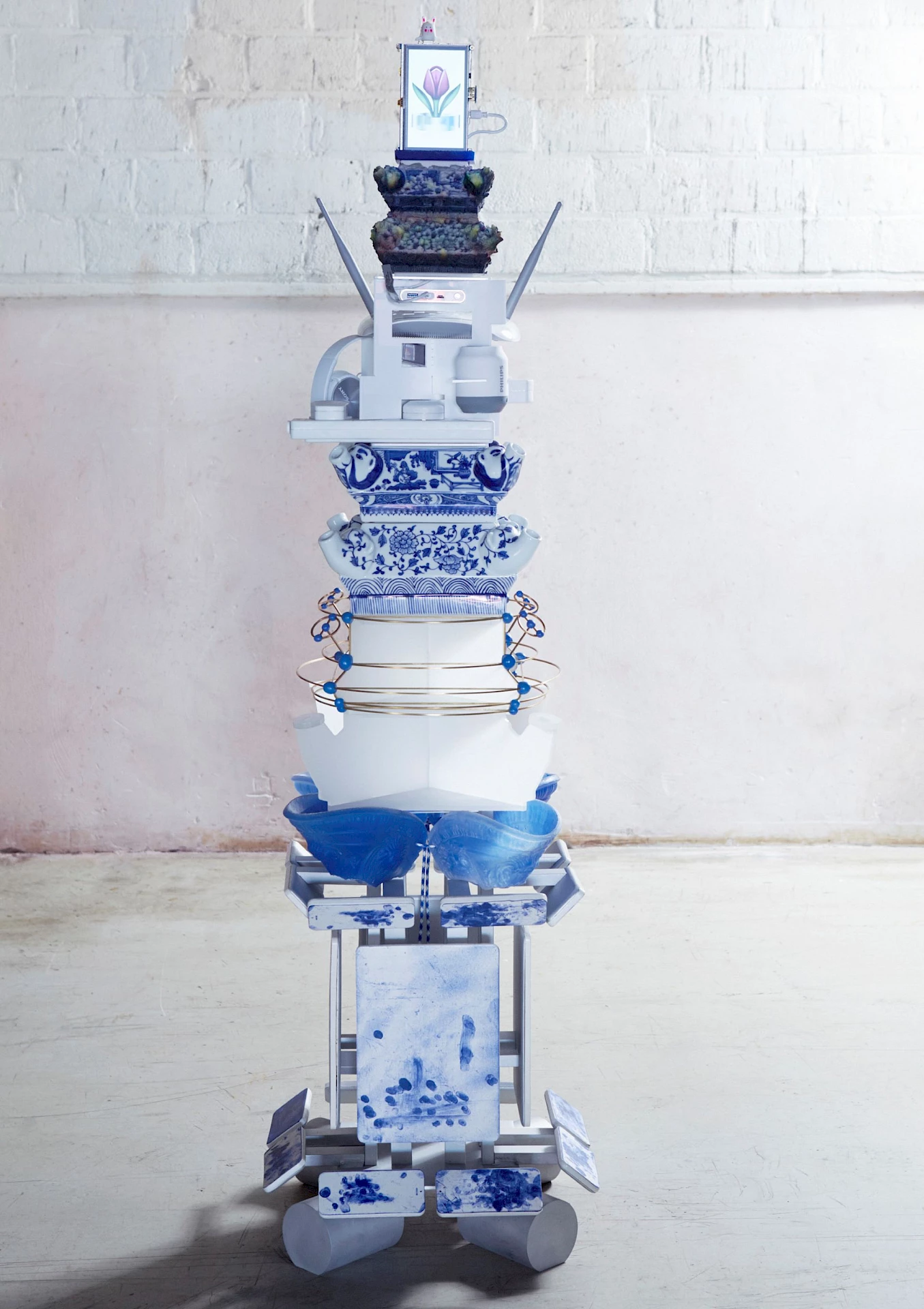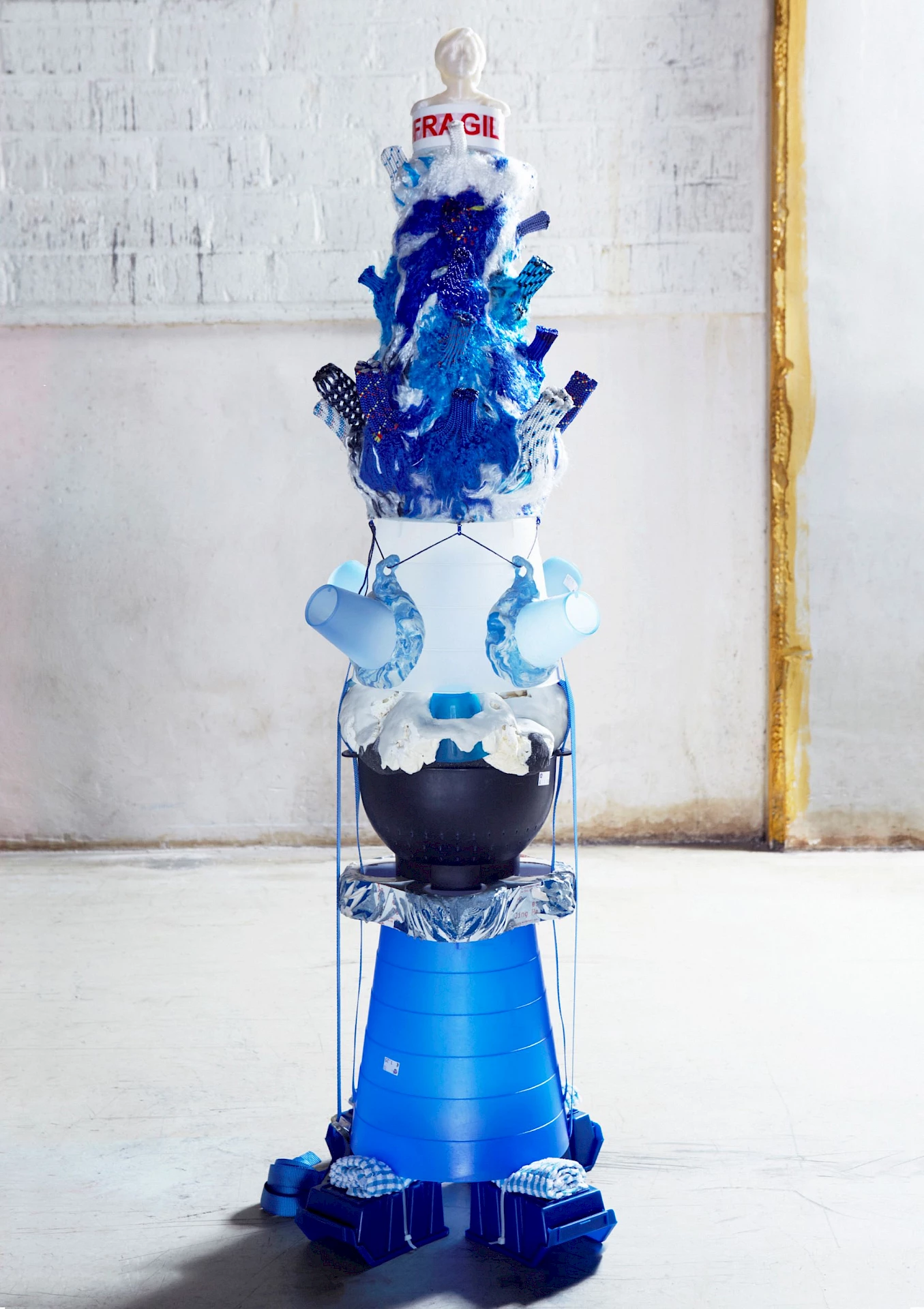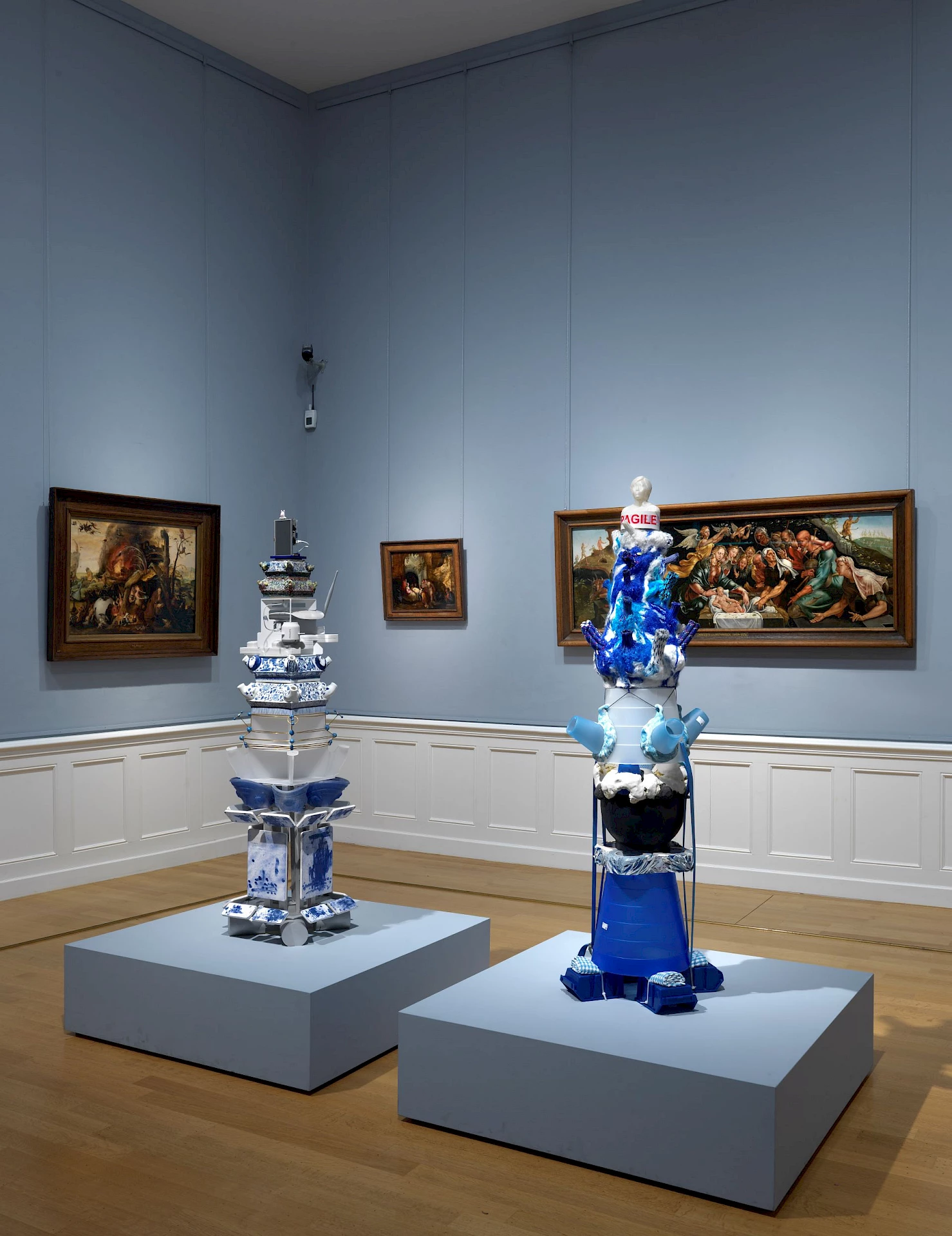These two tulip pyramids call for a revaluation of the often disparaged yet indispensable practice of copying in an ever more open and multicultural art scene. In China, the phenomenon of producing counterfeits of Western design has been criticised for its illegitimate profit in terms of copyright infringement, as well as its damaging effects on creating the unique ‘Chinese identity’. Being interested in the complicated relationship between copying and identity, I examined the history of the tulip pyramids of the Rijksmuseum. My research reveals to me the creative possibility brought by the intercultural copying between Chinese porcelain and its Dutch counterpart, despite the appropriation and the misinterpretation occurred during the process of cultural translation.
Thereafter, I remade two tulip pyramids that show the role of copying in reshaping cultural identity and in disenchanting the absolute connection between originality and creativity. One was created in remote collaboration with five Chinese designers/artists/craftsmen, who live in different cities in China and Europe. We shared the authorship of the pyramid. The other pyramid is made to self-reflect over my own identity as an in-between of China and the Netherlands. Incorporating the iconic works of five well-known Dutch designers into my former school works, I questioned their influences over me; and more importantly, I reactivated the practice of copying as a creative method that would stimulate new forms and new contents of art.
The publication of the project was published by Design Academy Eindhoven in 2016. (PDF)
Edition: Unique - collection of The Art of Institute of Chicago (US)




